Factsheet
Activities on Environment and Wildlife
We get many emails from young people asking us what they can do to play a greater part in the conservation movement, and so we have compiled this list of activities so that you can choose one or two interesting projects to keep you occupied and to help you learn more about wildlife and its conservation.
If you need any further information on these activities, just let us know and we will be happy to help you out.
For Nature Detectives
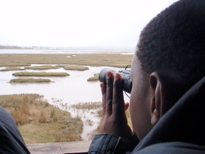 Bird Watching:
Bird Watching:
Make notes on the birds you see in your garden or local park. What do they eat? How often do they visit? Are any of them nesting in your area? Once you start keeping a bird observation diary, you will find it very interesting to compare your evidence with other days, weather or seasons. Remember that if you live in a town or city there are still plenty of birds to observe.

A squirrel survey:
How many are there in your area? Which trees do they prefer? Can you find any evidence of their presence e.g. fruit or nuts gnawed by squirrels. You could keep your information in a special folder with maps and drawings.
Study a tree:
Study a tree throughout the changing seasons of the year. You could make quite a nice scrapbook if you include bark rubbings, pressed leaves and drawings of buds, flowers or fruits. You could study the animals that live on or around the tree and note what time buds appear and leaves fall etc.)
Favourite animal:
You may have a favourite animal. Why not try to learn more about this animal. Is it an endangered species? Where does it live? Collect relevant news cuttings about your animal to keep your project up to date.
For your Creative Side
Poster: Apart from drawings and paintings of wild animals and scenery, you could make a poster on a conservation issue that you feel strongly about and then put it on your bedroom wall for your friends to see. Apart from getting your work admired, it would encourage your friends to care for wildlife as well.
Plaster of paris tracks: If you enjoy working with plaster of paris, you could go out and find some animal tracks and then make some really good plaster casts of the footprints. Build up a proper collection of these, carefully mounted and labelled.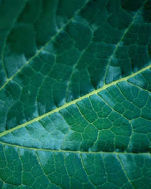
Clay leaf tile: Using clay, make a leaf tile by pressing a leaf, vein side down, on a square foot of clay about 2cm thick so that it leaves a mark. The finished tile can then be painted or varnished.
Wildlife treasure map: If you fancy yourself as a cartographer, why not try making a wildlife map of the area around your home. Just put in one or two buildings and roads as landmarks, and then put in your own design of symbols for trees, bushes, wild flowers and animals. Don’t forget to put a key at the bottom so that people know what your symbols mean. By looking at the map, your friends will be able to go round and see all the wildlife around your home – rather like a mini nature trail.
For the More Practical Youngster
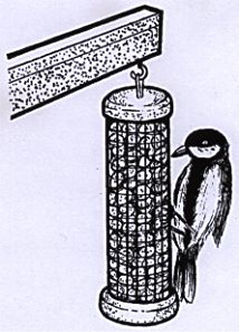 Bird garden: If you have a garden, why not turn it into a bird garden? With your parents’ permission, you could put out food for the birds and leave water for them in an upturned dustbin lid or plastic bowl. If you are feeling more adventurous you could make a bird table or bird box. For those without a garden, don’t forget that many birds in wasteground areas or parks also welcome the food you put out for them.
Bird garden: If you have a garden, why not turn it into a bird garden? With your parents’ permission, you could put out food for the birds and leave water for them in an upturned dustbin lid or plastic bowl. If you are feeling more adventurous you could make a bird table or bird box. For those without a garden, don’t forget that many birds in wasteground areas or parks also welcome the food you put out for them.
Grow your own tree: You can do this quite easily by planting acorns, sycamore seeds or even apple or orange pips in a pot, watering regularly and waiting. You may need a fair bit of patience for this activity! Once your seedling starts to grow you can plant it in your garden. If you visit your old home in twenty years time, you might notice a huge tree where you planted your seedling.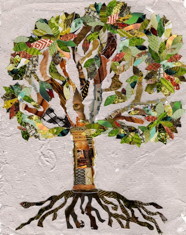
Take photos: You may have a camera at home, and if you are interested in photography, why not try taking photographs of the wildlife around your home. As it is sometimes difficult to photograph wild plants and animals, don’t forget that pictures of woodland, meadowland or other scenery also count as part of our Natural History. It can be very effective to try and photograph the contrast between Nature and human's progress. Pictures like this can give off a strong conservation message to your friends.
Recycle project: Sadly, we live in a world of waste and litter. However, many people and organisations are thinking up new ways to reuse the things we would normally just dispose of. This process is called recycling. Can you think of any ways in which we could recycle everyday items that get thrown out? Make a rocket from bottles and tubes or a great pictures from magazines. Why not try out one or two of your ideas for making things out of household waste?
For The Caring Conservationist

Learn the code: Learn your countryside code, and always use it.
Tidy up: If you are an angler, remember to tidy up after yourself. Fishing tackle can kill swans and other river birds.
Plan events: Why not try and organise a litter collection or a clean-up of a waste area near you. If you are a Brownie, Guide or Cub Scout, you may be able to get something organised through the pack.
Be careful what you buy: If you are going on a holiday this year, remember to be careful about your choice of souvenirs. If you buy ivory ornaments, coral, shells, snakeskin belts or souvenirs made of fur, you are encouraging people to go out and kill more wildlife to keep the trade going. Also, if you buy products made from some endangered species, they could be confiscated by Customs and Excise, as you need a licence if you want to import these to Britain.
This is the Most Important Activity you can do
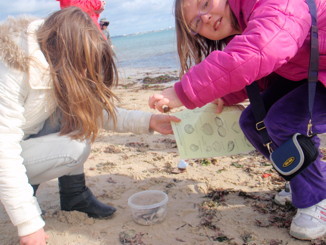 Learn all about the wild plants and animals. In this way you can get a sensible, balanced view of the problems affecting some of the wildlife and wild places of the world, and become a caring and helpful conservationist as you grow up.
Learn all about the wild plants and animals. In this way you can get a sensible, balanced view of the problems affecting some of the wildlife and wild places of the world, and become a caring and helpful conservationist as you grow up.
We do hope that the above list will, at least, have given you something to think about, but don’t forget that we would be most interested to see how you get on, so do write or email us!
 Bird Watching:
Bird Watching:


 Bird garden: If you have a garden, why not turn it into a bird garden? With your parents’ permission, you could put out food for the birds and leave water for them in an upturned dustbin lid or plastic bowl. If you are feeling more adventurous you could make a bird table or bird box. For those without a garden, don’t forget that many birds in wasteground areas or parks also welcome the food you put out for them.
Bird garden: If you have a garden, why not turn it into a bird garden? With your parents’ permission, you could put out food for the birds and leave water for them in an upturned dustbin lid or plastic bowl. If you are feeling more adventurous you could make a bird table or bird box. For those without a garden, don’t forget that many birds in wasteground areas or parks also welcome the food you put out for them.

 Learn all about the wild plants and animals. In this way you can get a sensible, balanced view of the problems affecting some of the wildlife and wild places of the world, and become a caring and helpful conservationist as you grow up.
Learn all about the wild plants and animals. In this way you can get a sensible, balanced view of the problems affecting some of the wildlife and wild places of the world, and become a caring and helpful conservationist as you grow up.